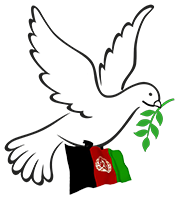An official of this organization told TOLOnews that more than two million people, of which 50% are children, are in need of immediate humanitarian aid.
Save the Children reported that child labor in Afghanistan has increased by 38% compared to last year.
An official of this organization told TOLOnews that more than two million people, of which 50% are children, are in need of immediate humanitarian aid.
Arshad Malik, the country director of Save the Children in Afghanistan, said: “As I said before, there (is an) approximately 38% increase in the number of children who are now involved in child labor, and we (with our) work on street children program which we are implementing in Kabul and in Nangarhar we are supporting these children. When it comes to the actual growth causes, as I said, the economic situation, reduction of funding, the crises Afghanistan is facing, the climate change and also the impact of lack of banking sector operations like international trade, all that has impact in the overall economy in Afghanistan and that impacts the children, and families are forcing children to work outside of the household which deprives them.”
The country director said that after the Islamic Emirate came to power, the organization provided $200 million dollars in aid to the people of Afghanistan.
Meanwhile, the Islamic Emirate is asking aid agencies to coordinate their assistance with the caretaker government to reach the people of Afghanistan.
Zabihullah Mujahid, the spokesperson for the Islamic Emirate, said: “The people of Afghanistan are in need of help in various sectors, their (aid agencies) cooperation is commendable in the medical sectors, helping the poor, and creating jobs for the people.”
Some child laborers said that due to economic challenges, they are forced to do hazardous work.
“My sisters at home are hungry, and we have nothing to eat, so I am busy with street vending,” said Maryam, a child laborer.
“We would like to study like other children,” said Ajmal, a child laborer.
Earlier, UNICEF called 2023 a disastrous year for children in Afghanistan, stating that more than a third of children in Afghanistan are engaged in hazardous work.
 Afghanistan Peace Campaign
Afghanistan Peace Campaign
